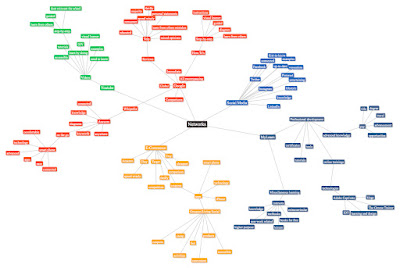Over the past 7 weeks I have learned
so much about the way myself and others learn. I started this class thinking
that I knew exactly how and why I learned the way I learned. I considered
myself a visual learner and had no other concept of learning strategies or
theories. Since then, I have learned about behaviorism, cognitivism, social
learning, constructivism, connectivism, adult learning, multiple intelligence,
and a plethora of other theories and strategies to explain how and why the
human person learns the way they learn. I have a very different view on my own
learning as a result of these theories and what I now know about the brain and
learning strategies.
In addition to being a visual learner, I now
know that my learning preference can actually vacillate in the course of the
same content area. I also know that I am highly influenced by social learning
strategies as well as connectivist. Being the type of person that wants to
learn visually, it makes sense that I would use my network of available
resources to seek out information that was relevant and applicable to my needs.
I know that I am a visual learner and when not presented with the type of input
of information that is beneficial to me, I know where to go in order to find
that type of information. In most cases, I would seek out resources online to
help me better understand a concept or have it demonstrated. Furthermore,
social learning strategies have played a huge part in the way I have learned.
Being a visual learner and having very strong bodily-kinesthetic and
interpersonal intelligences, my desire to be with and interact with others
makes a lot of sense when considering the types of activities that make
learning easier and more enjoyable.
Having this advanced knowledge of
learning theories is going to greatly impact my professional practice. Knowing what
I now know, I want to be able to use these strategies and theories to improve
the experience of my learners. Throughout the course we were given many tools
and tips for implementing these ideas into our career and I am very excited to
begin. One of the things that I am most excited about doing is working toward a
flipped classroom model of instruction. Technology is so important in my
industry and the resources that I have available to help my learners are so
vast that it would be a shame not to use them to my advantage. Technology use
in a flipped corporate classroom would give me many options for connecting with
learners more effectively and increasing their productivity. In addition, utilizing
the principles of adult learning theory while implementing a flipped classroom
model would build greater trust and a stronger partnership between me and my
learners. Being someone who naturally gravitates towards technology for my own
learning, I am excited to be more innovative and experiment with different
practices to impact my organization.
In conclusion, the knowledge that I now
have regarding learning theories is going to greatly impact my practice and
effectiveness in my organization. Looking back at my original perception of
learning and the very narrow-minded ideas that I had makes me very happy to
have been a part of this course.
